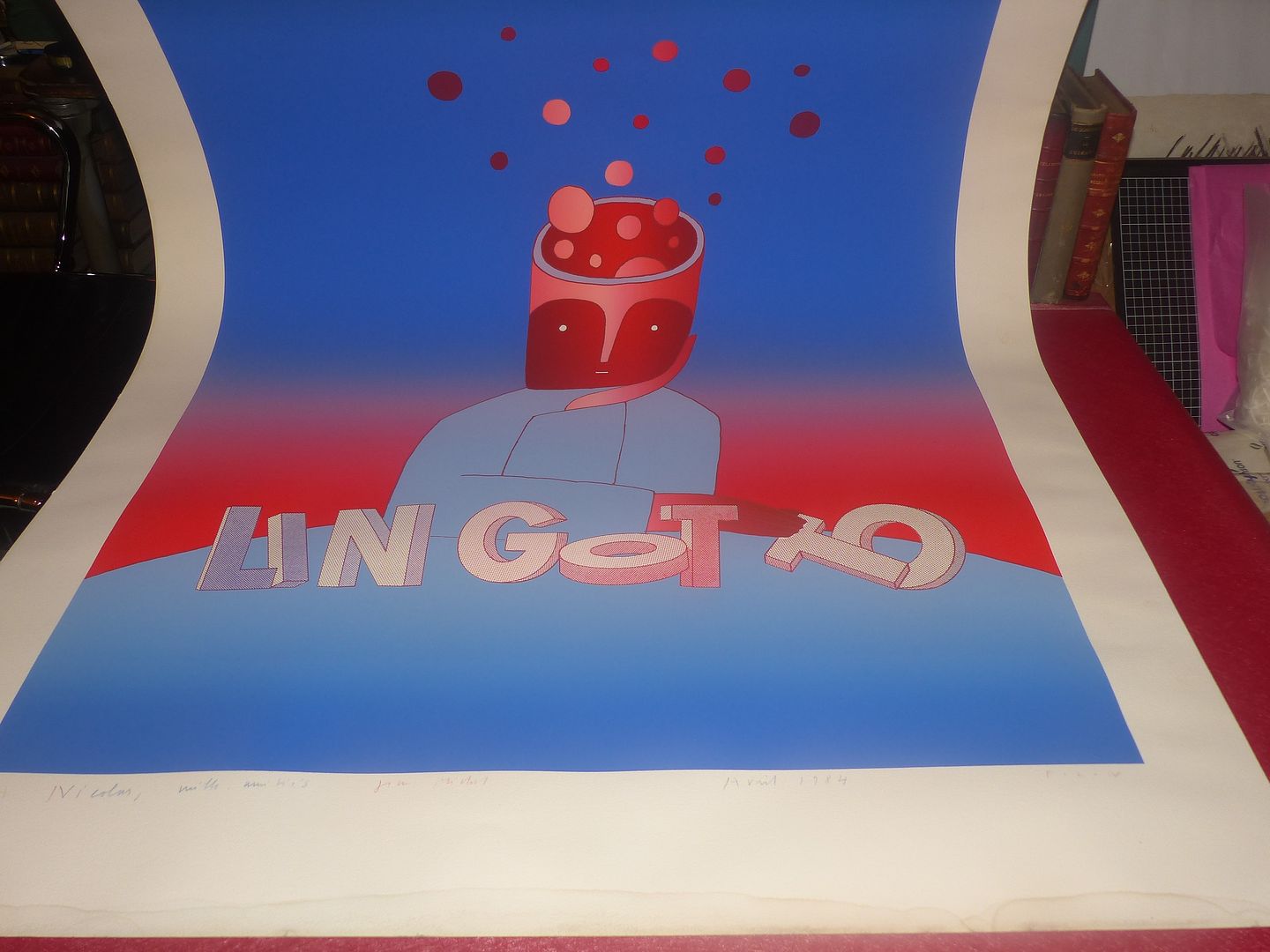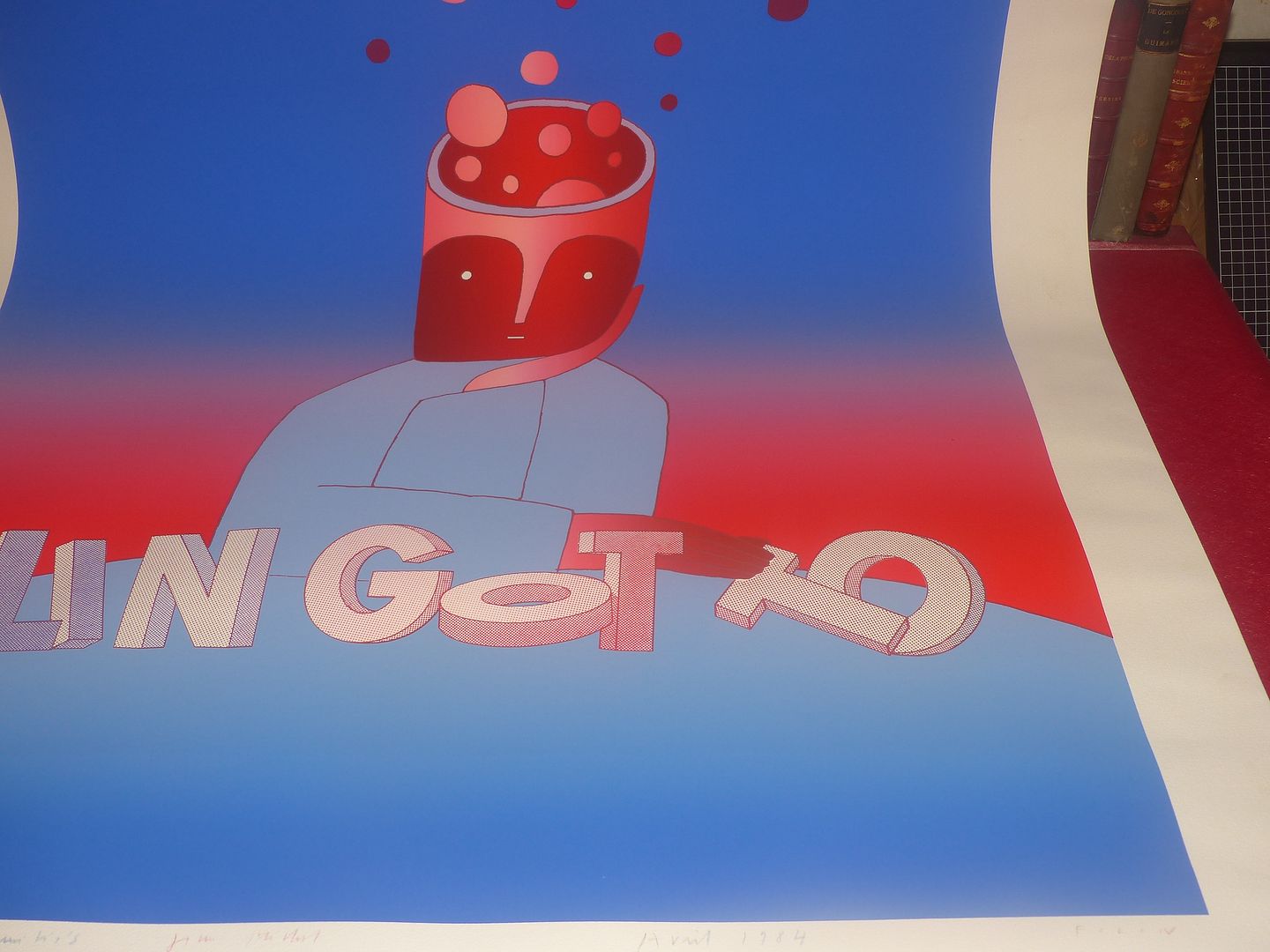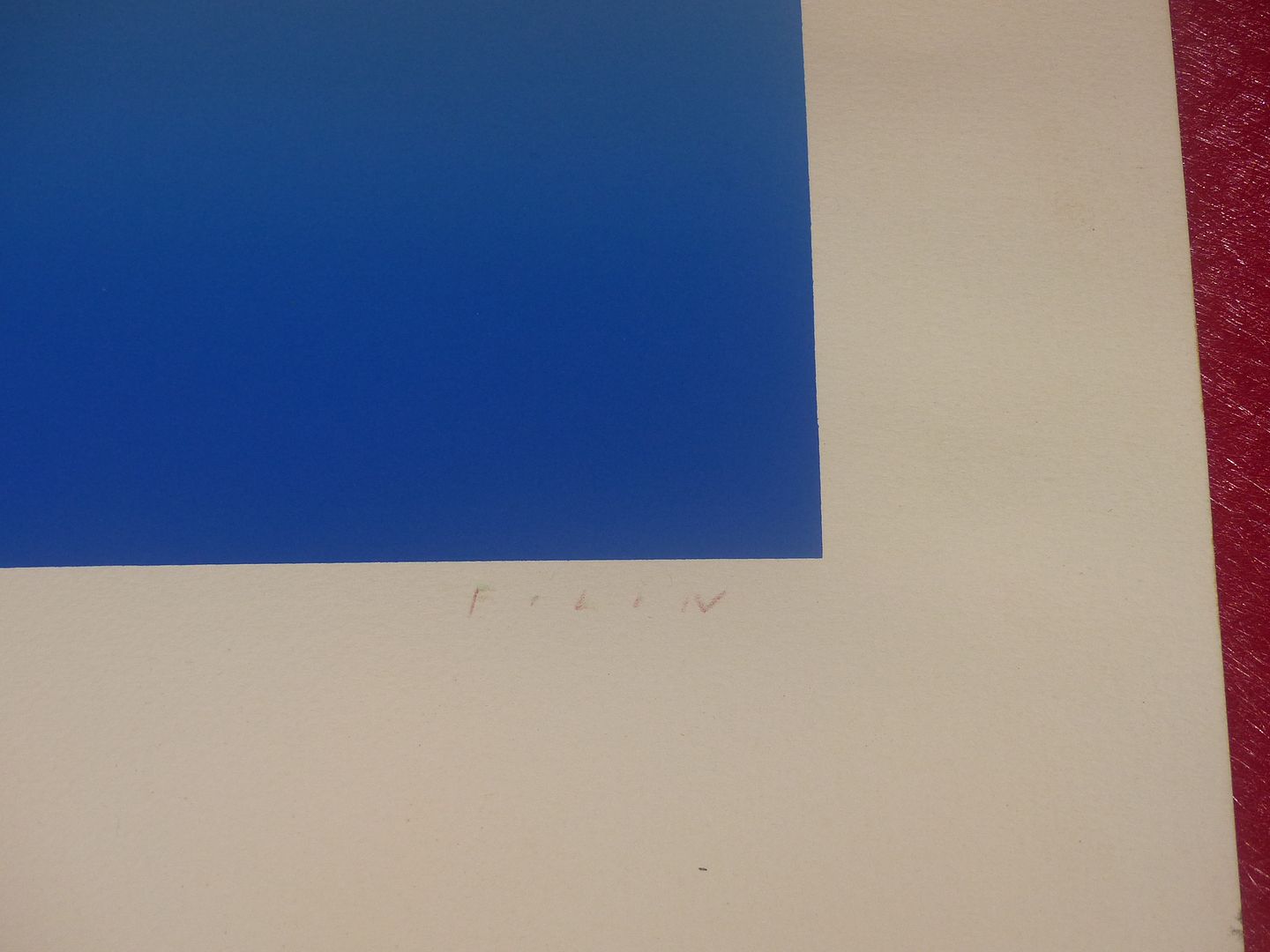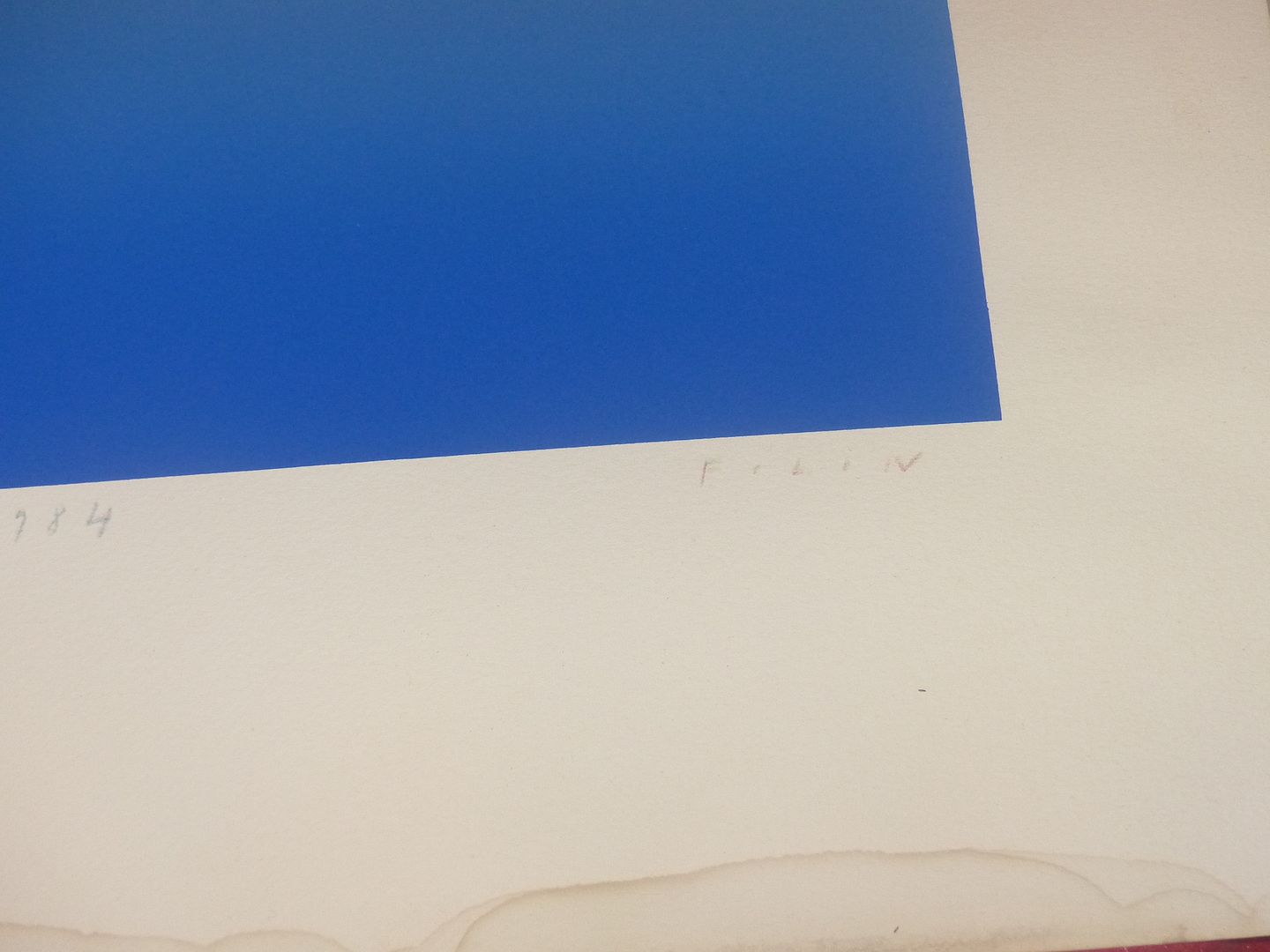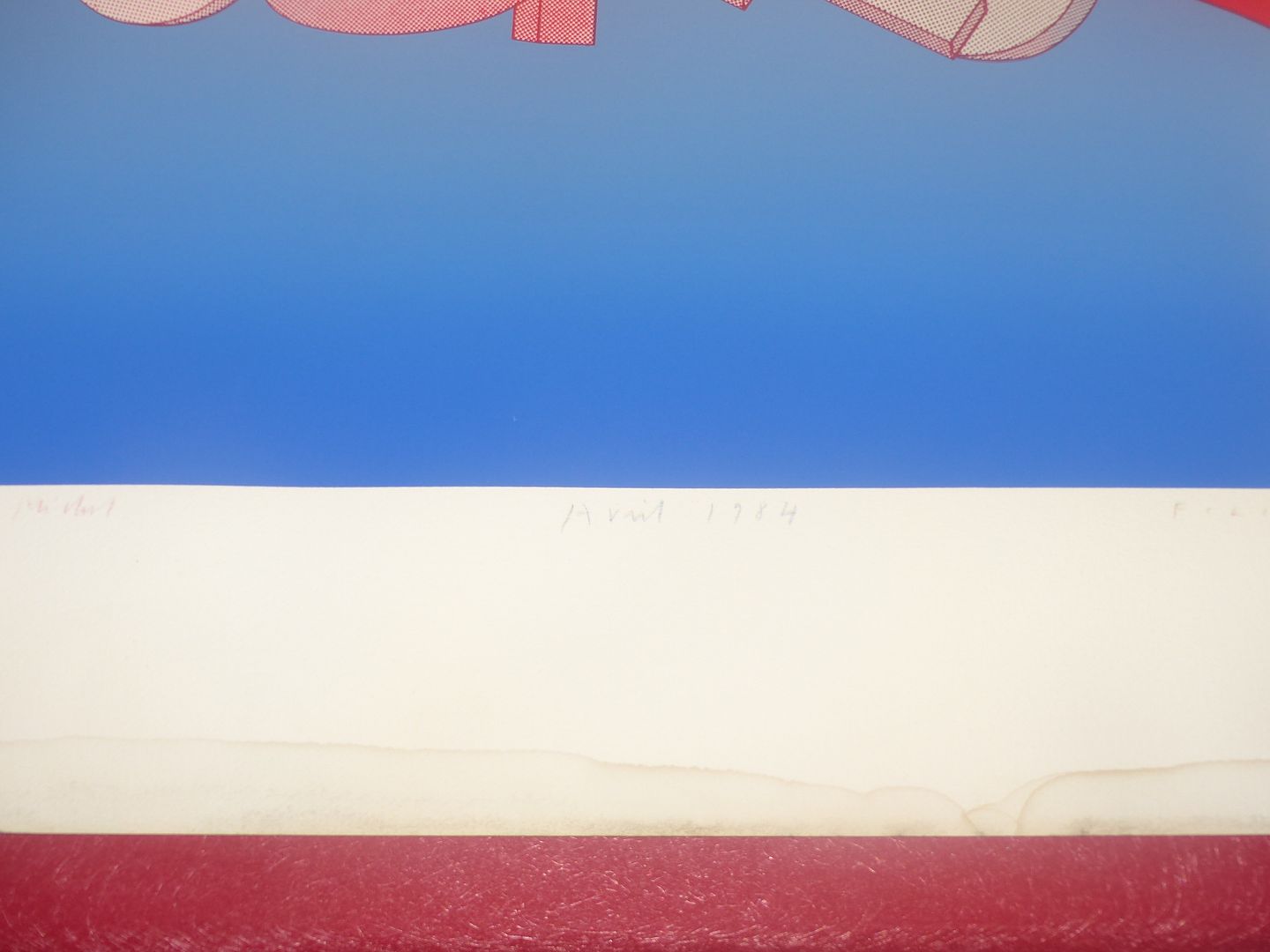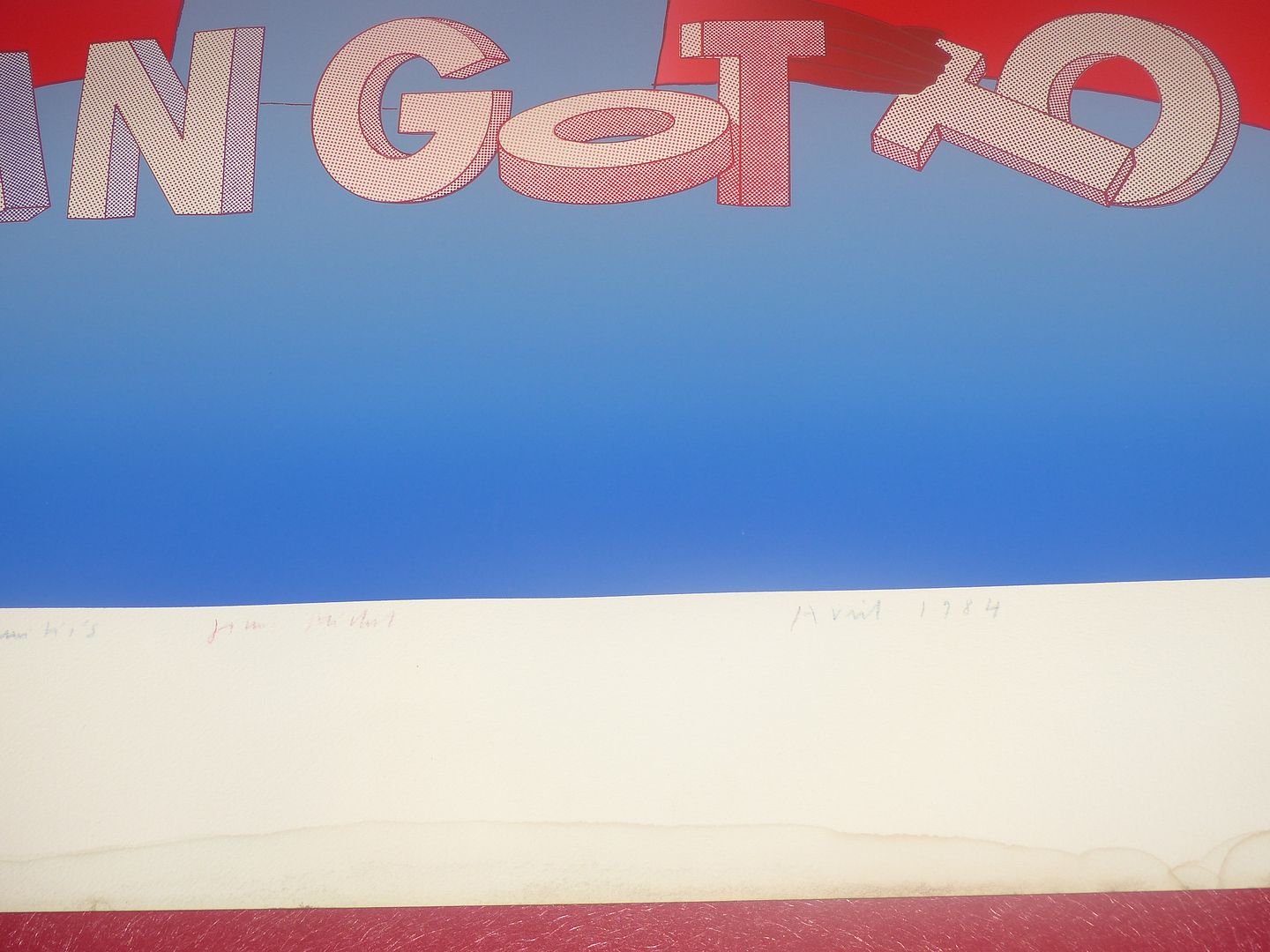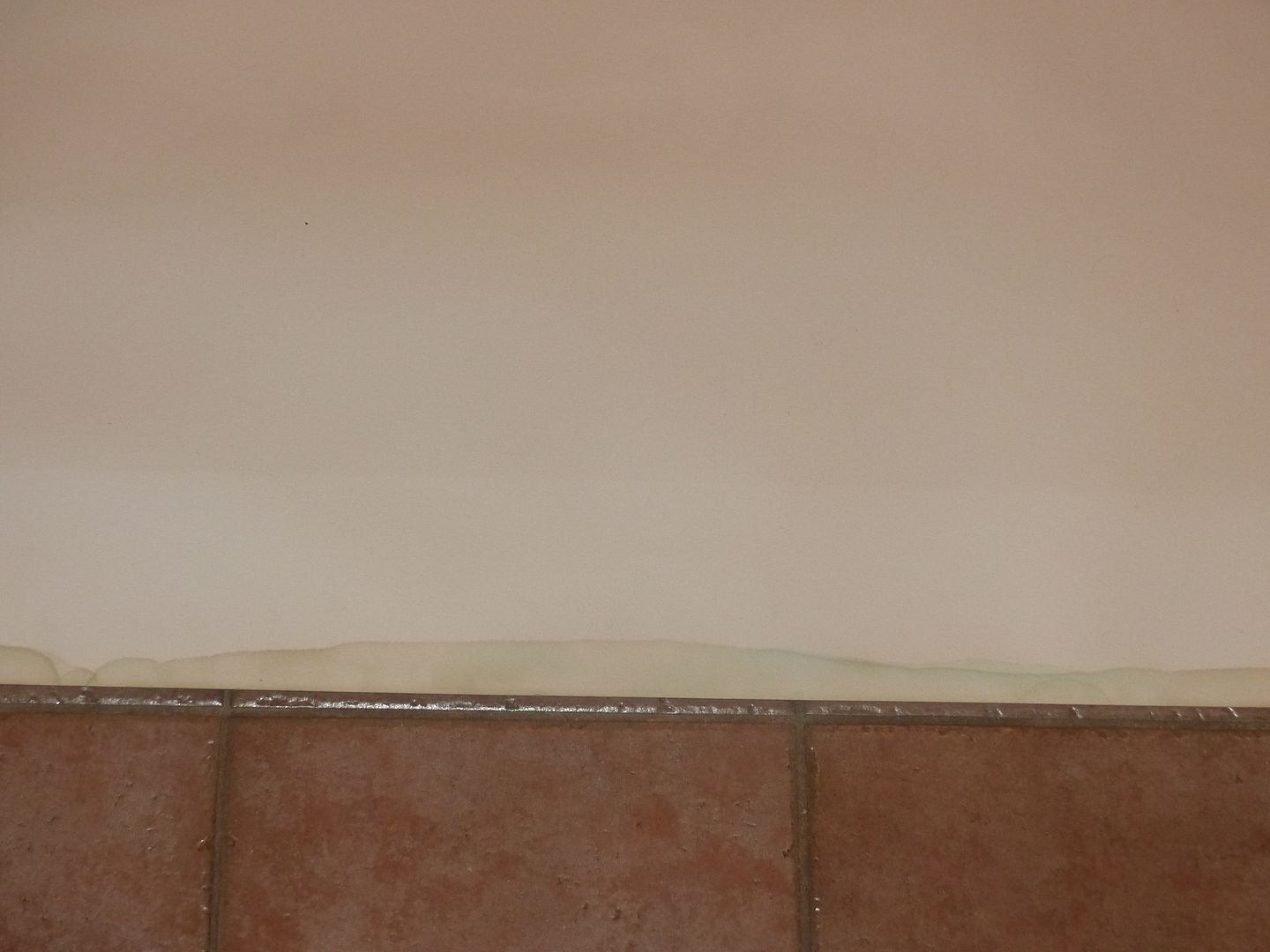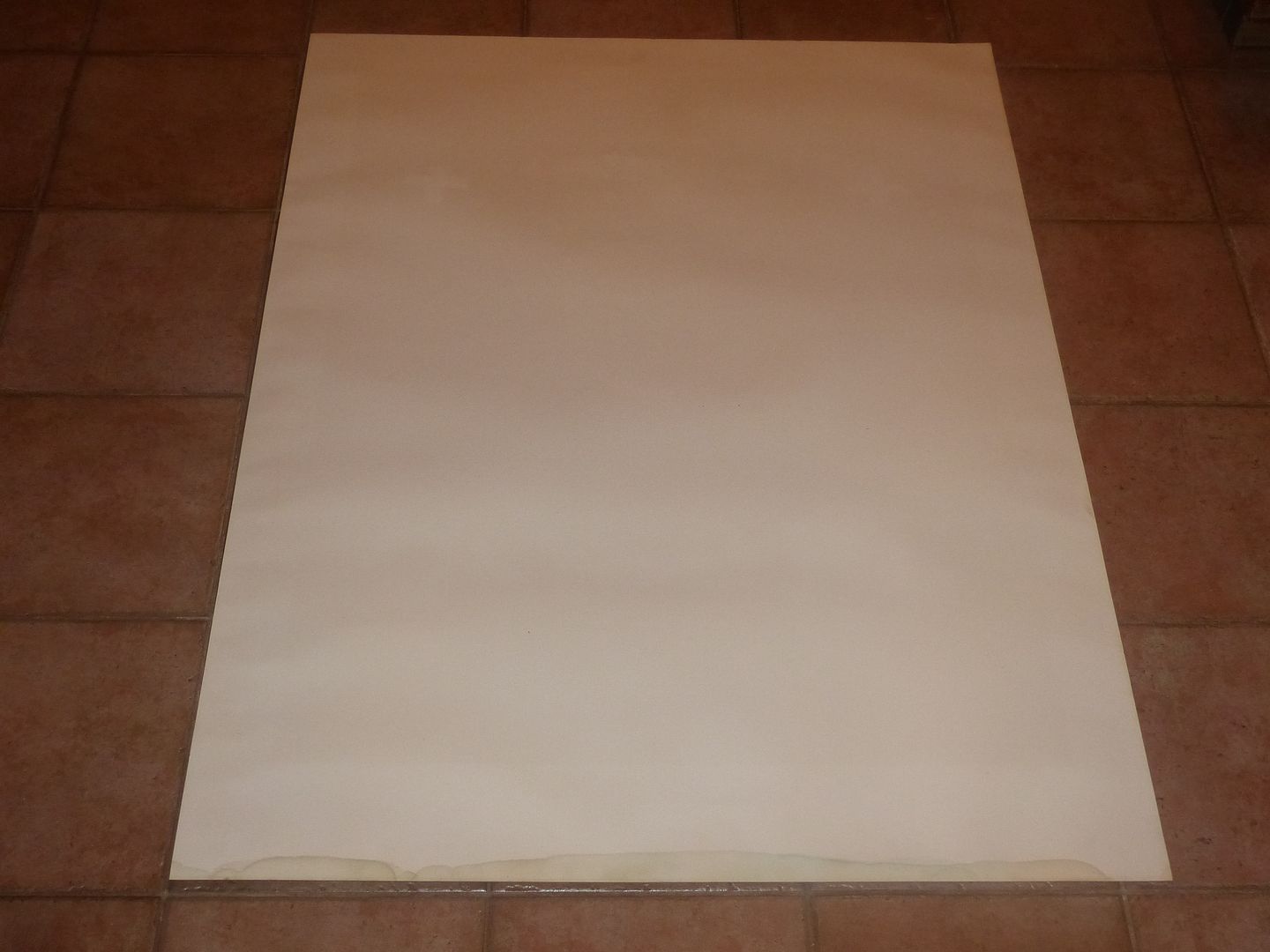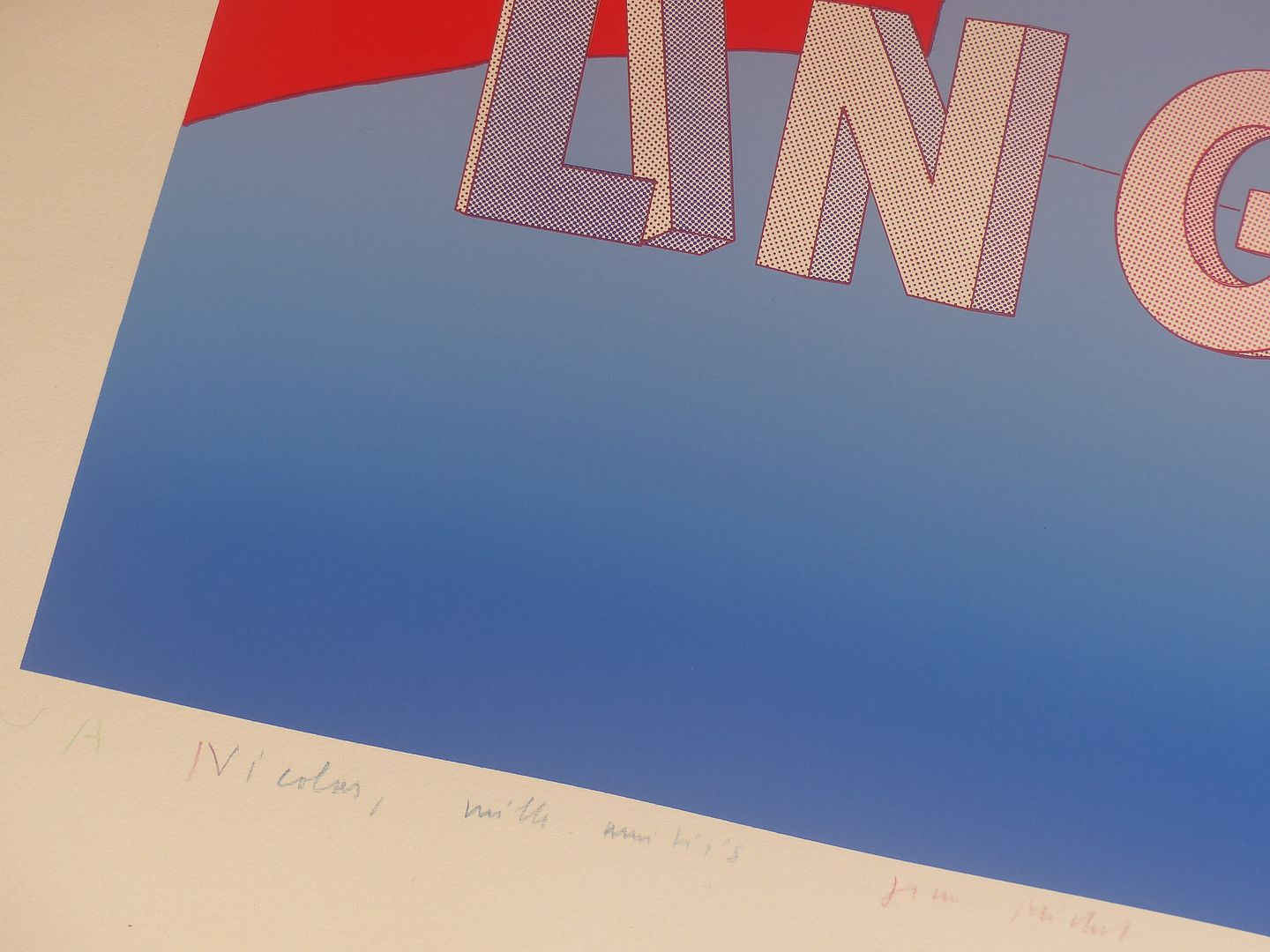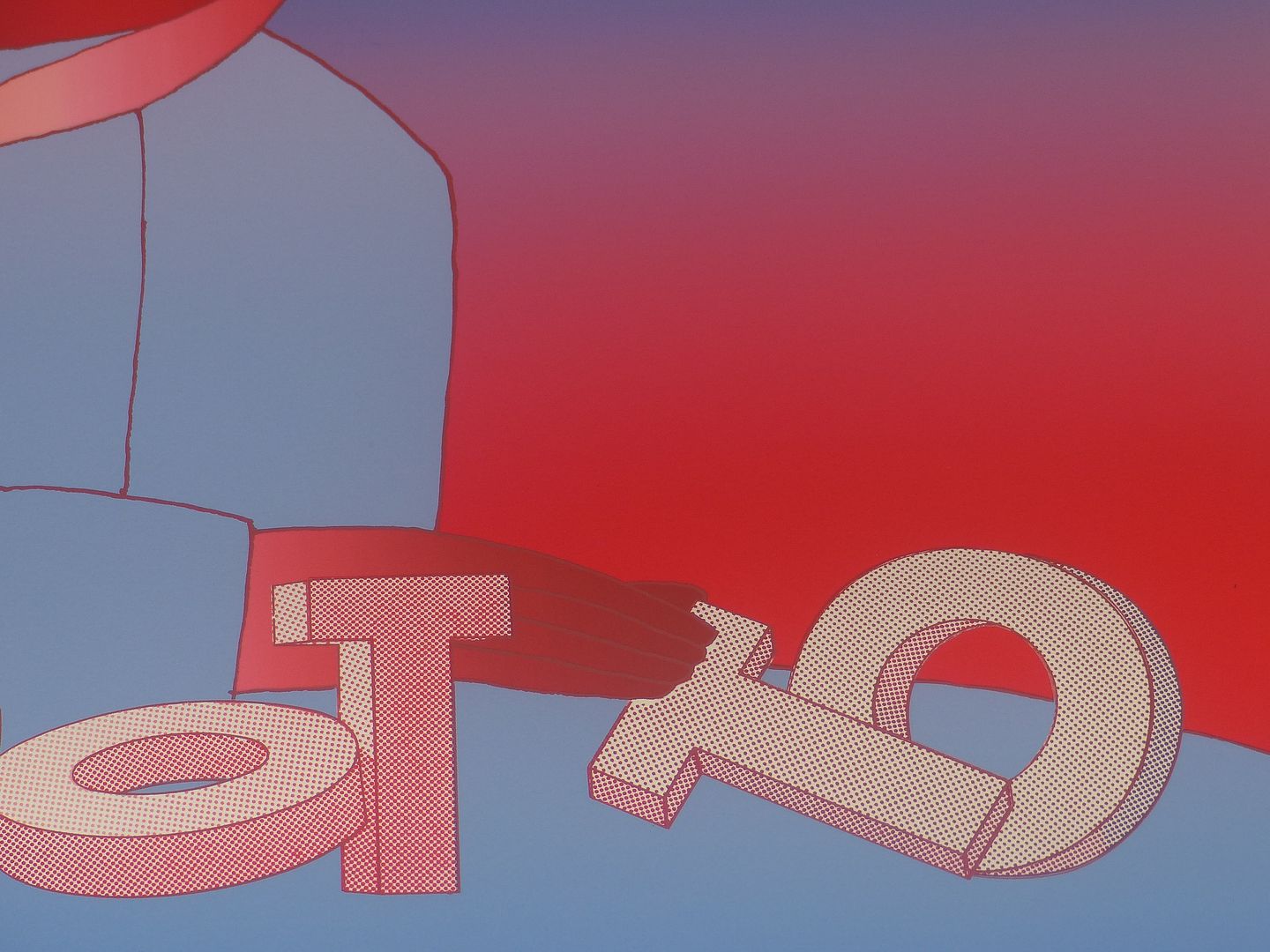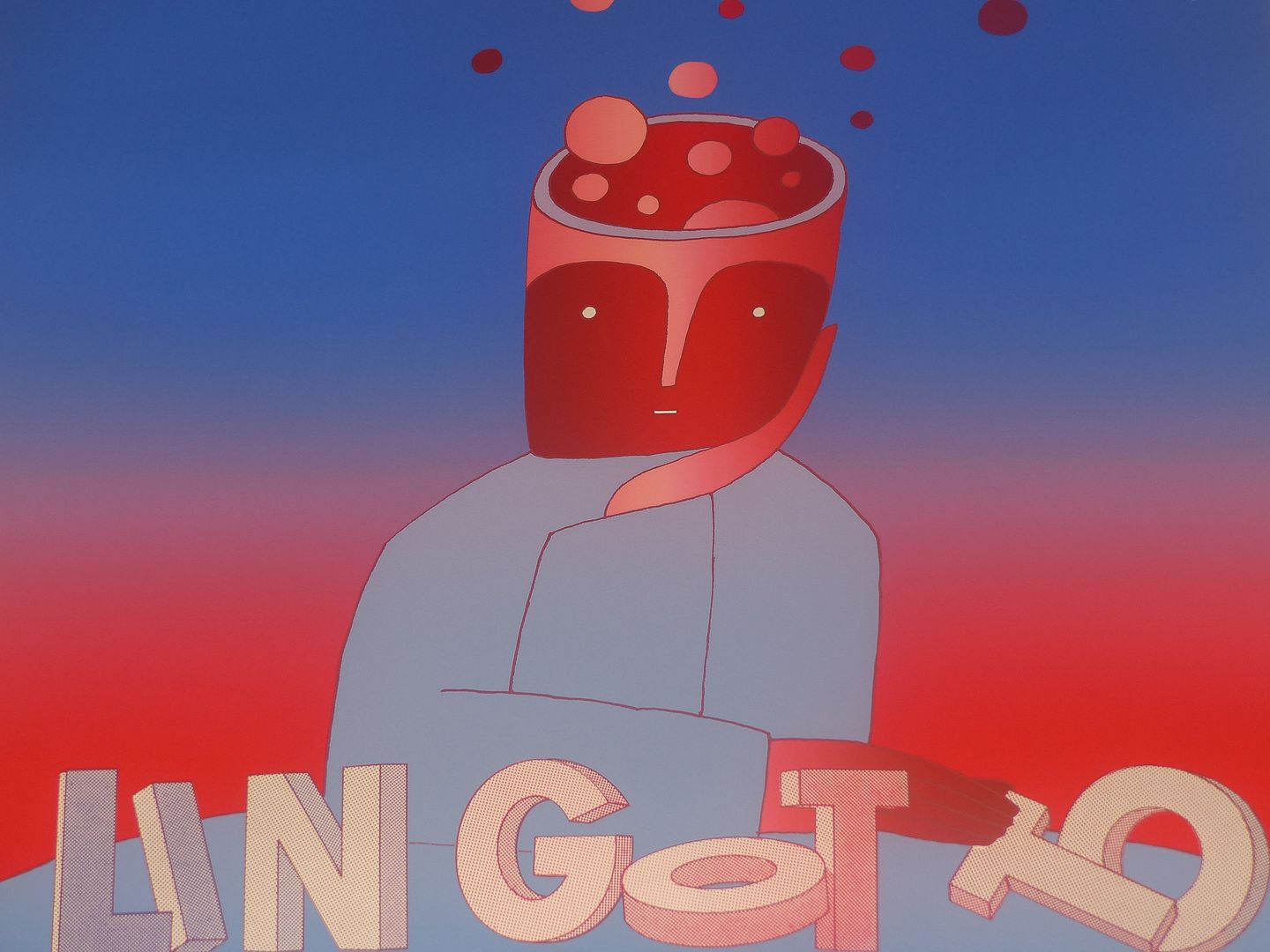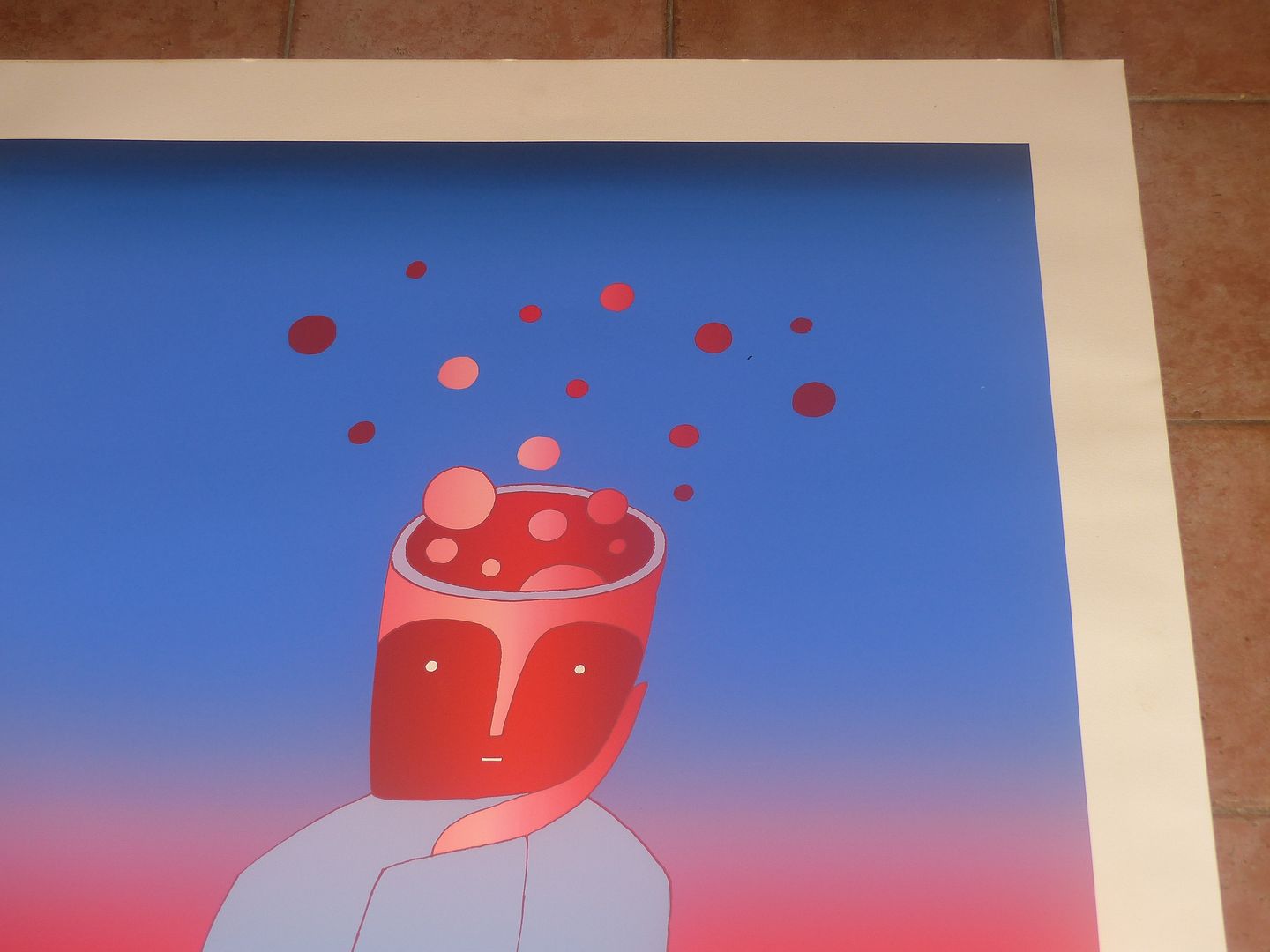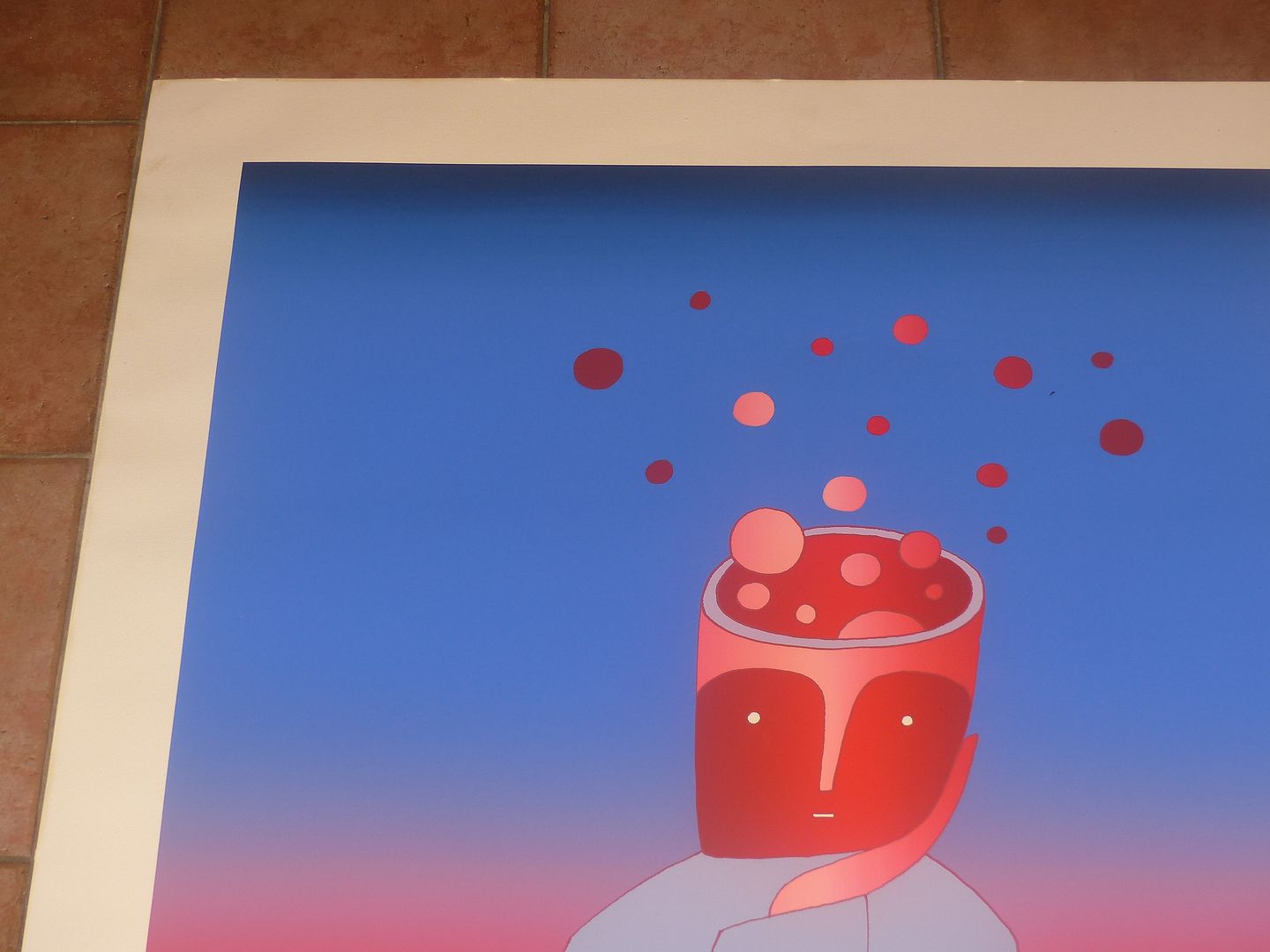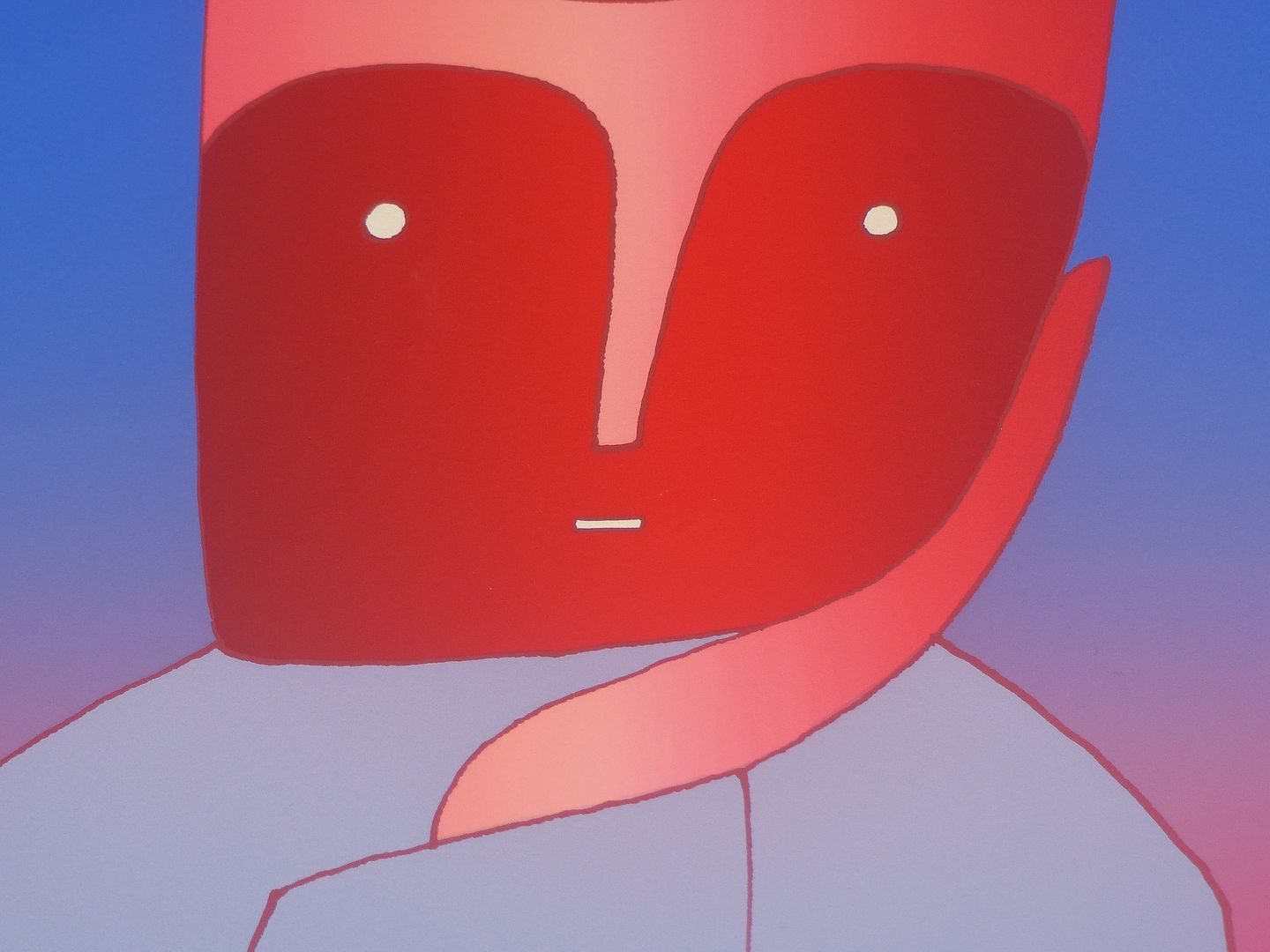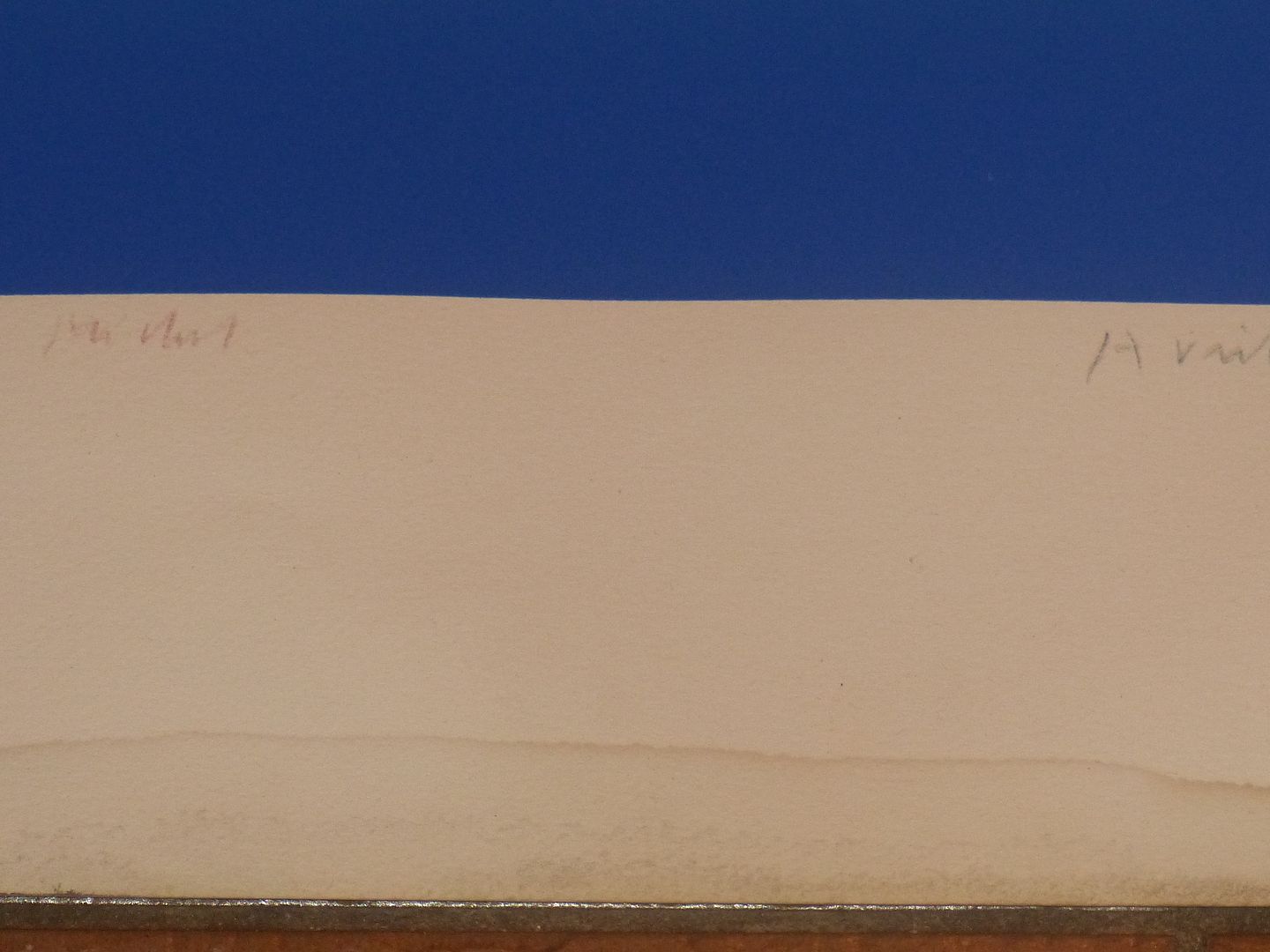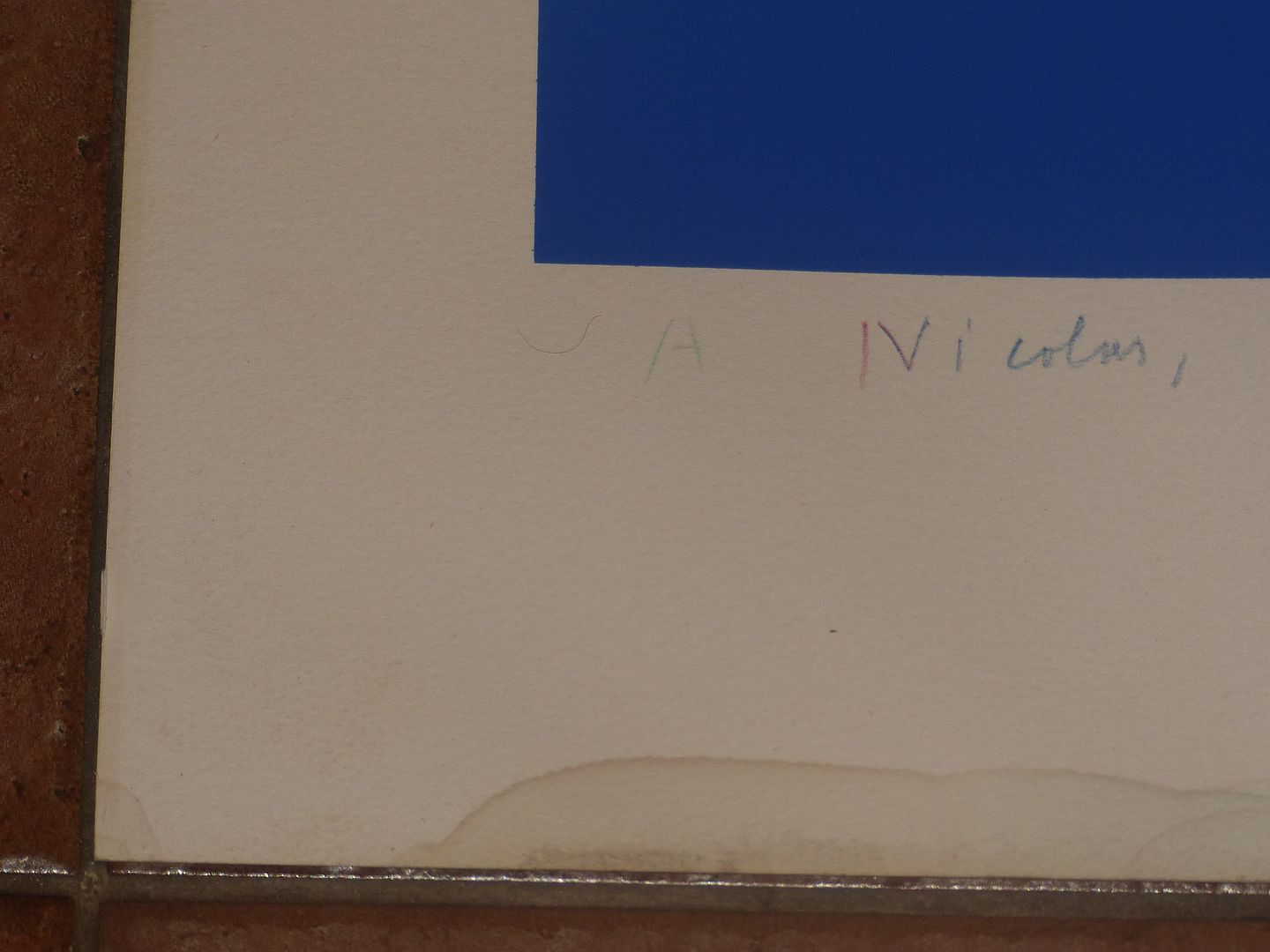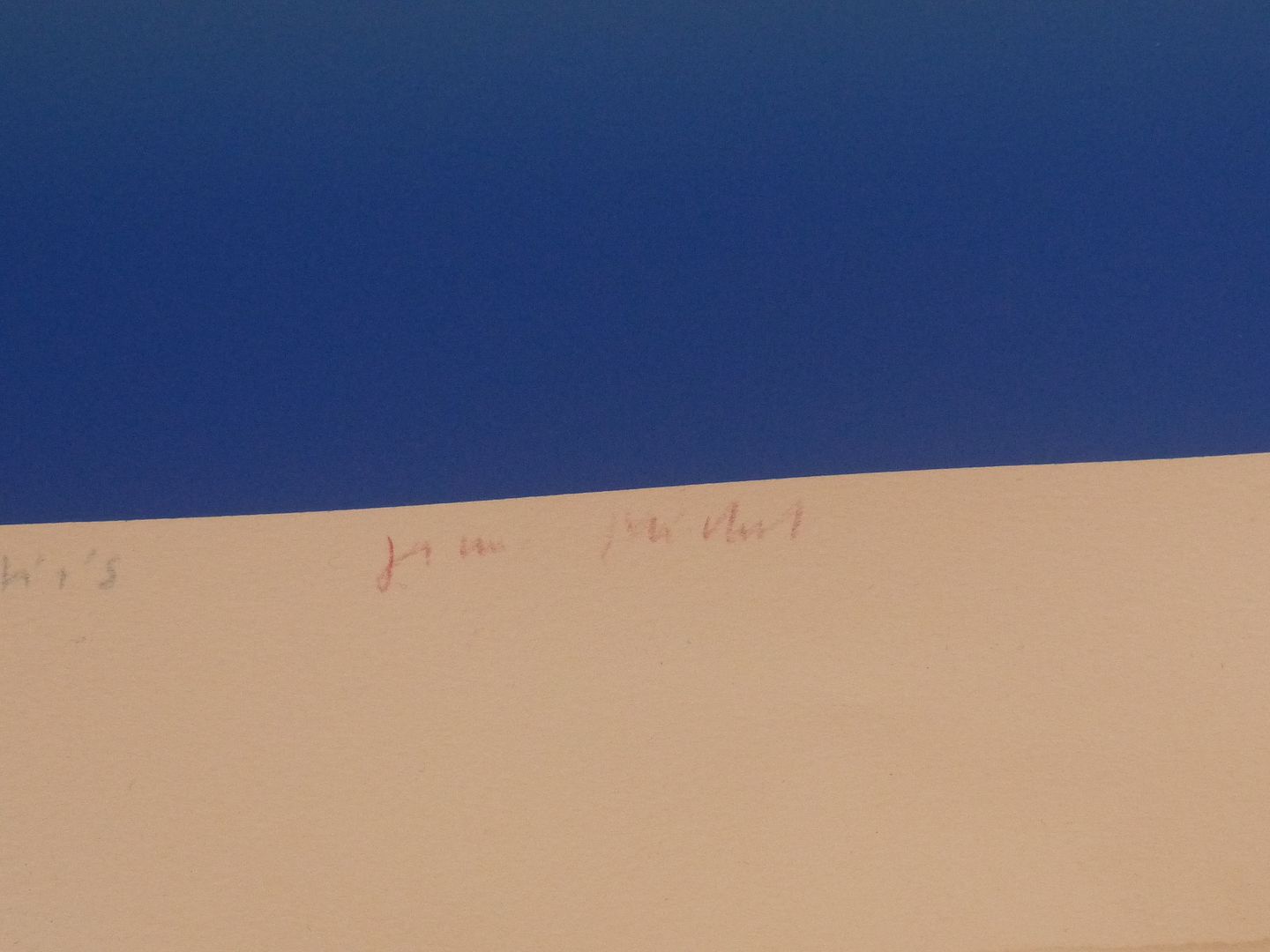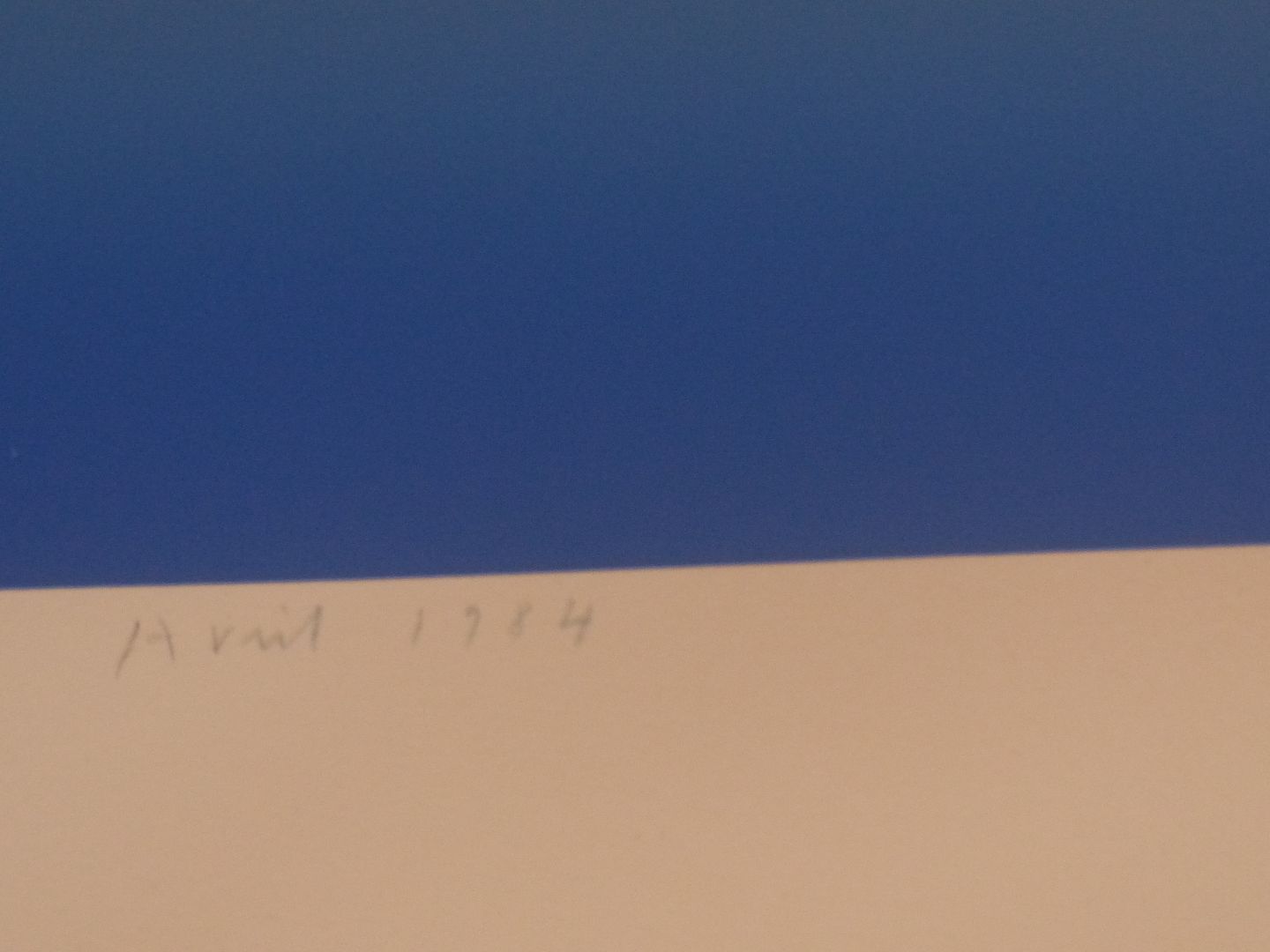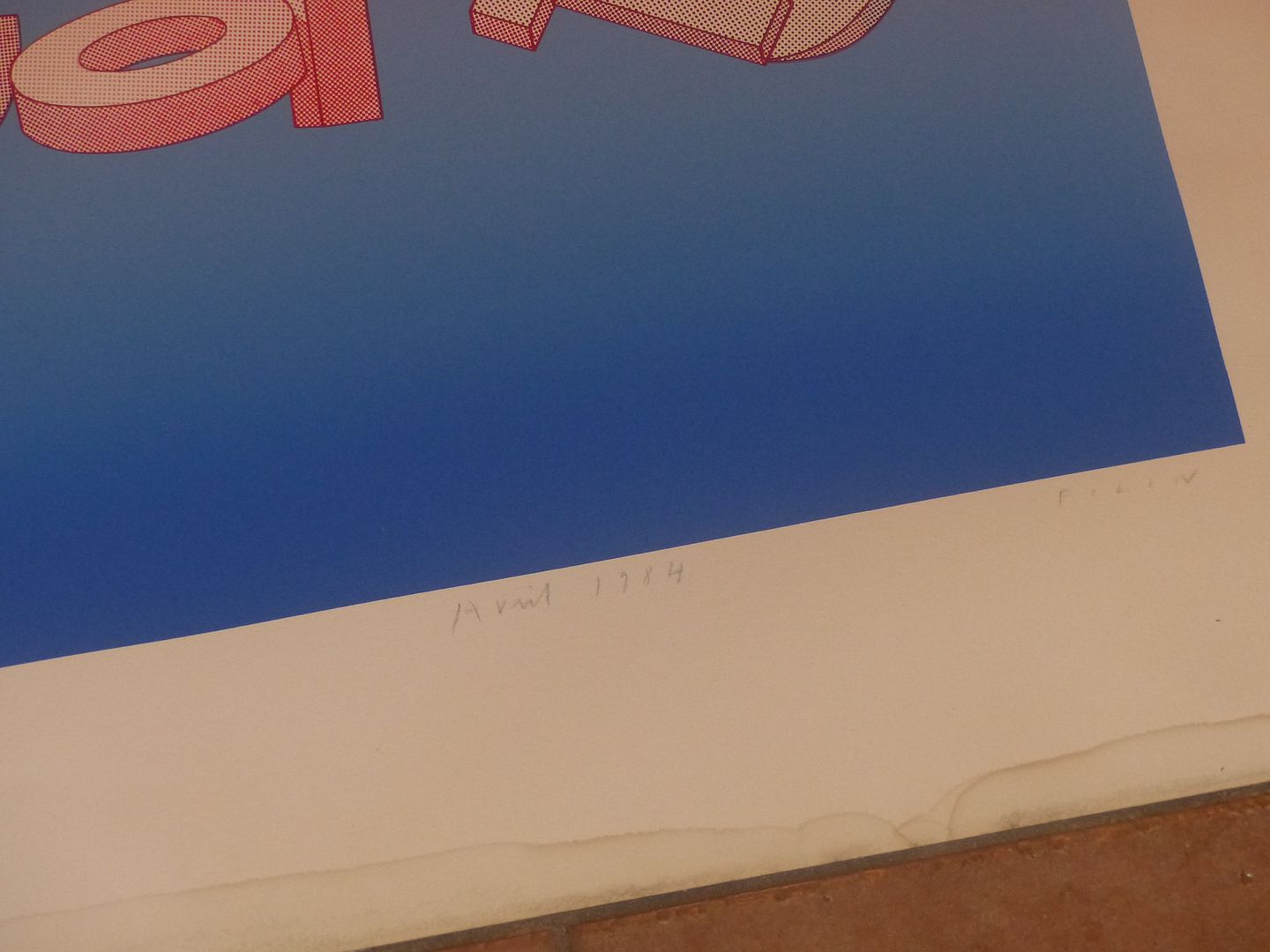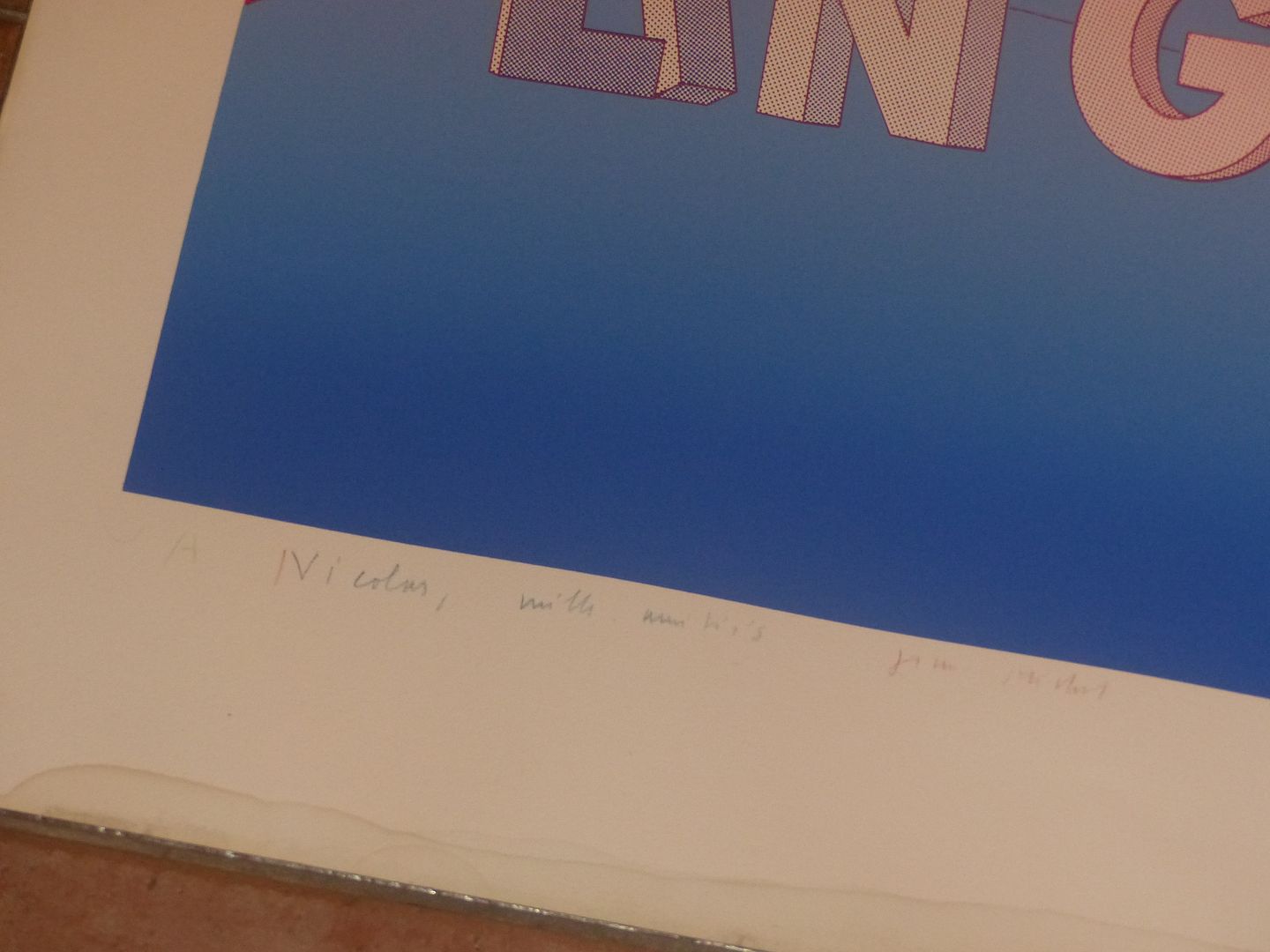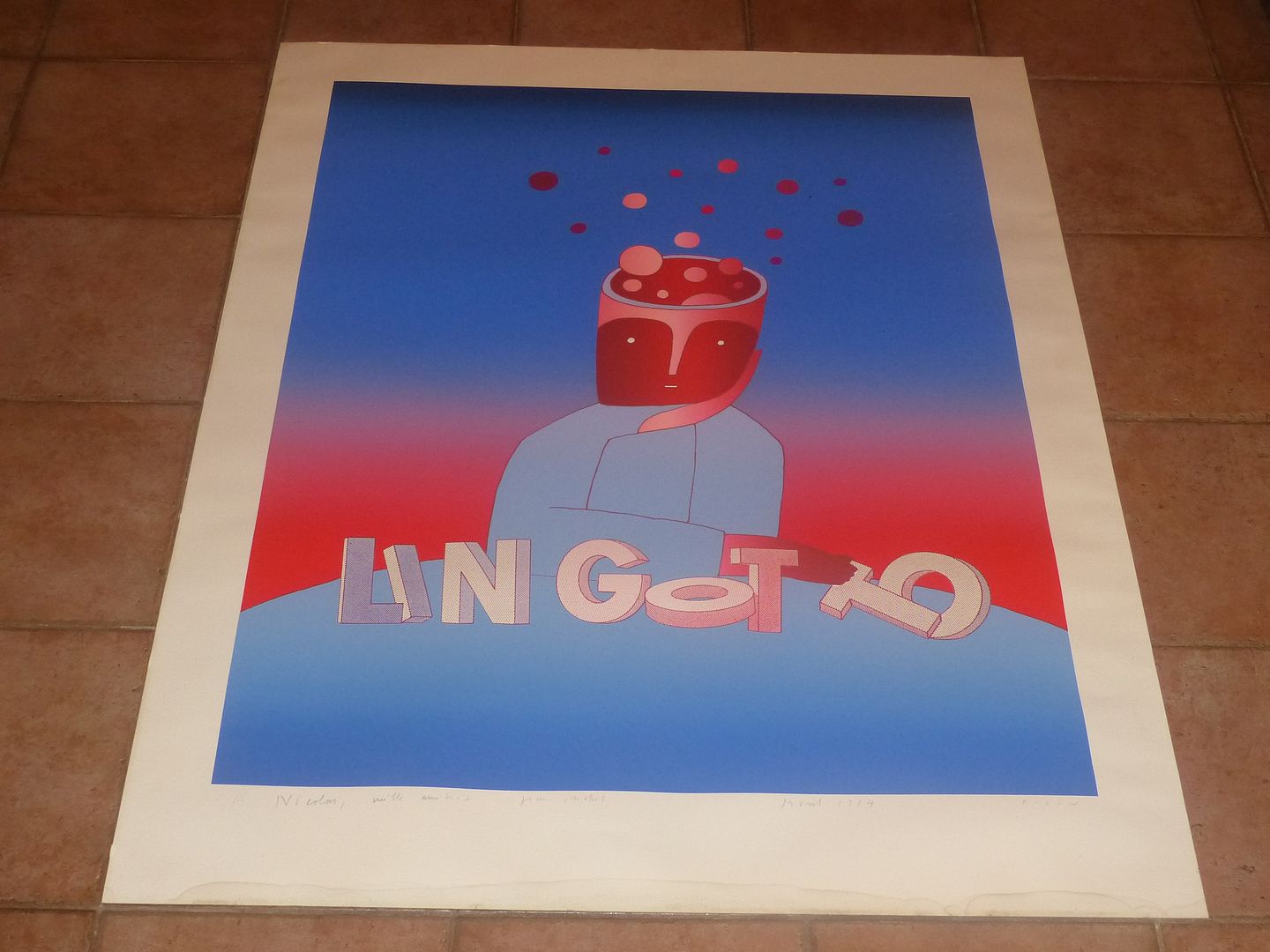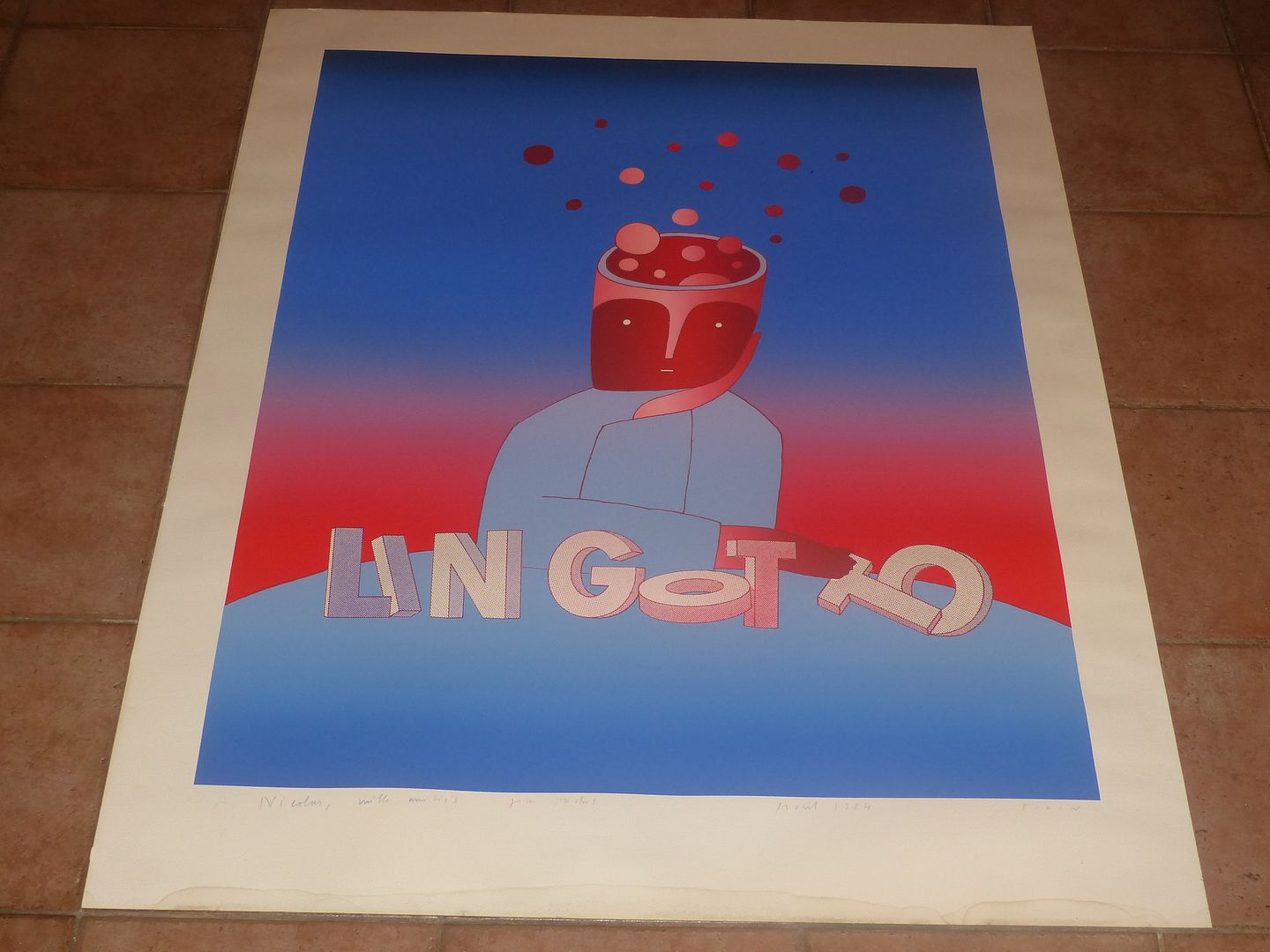[20th ART - ORIGINAL LITHOGRAPH OR SCREEN PRINT - AUTOMOTIVE - ITALY -
PRINT SIGNED AND DEDICACED BY THE ARTIST IN PENCIL]
Jean-Michel FOLON
1934-2005
Jean-Michel Folon, born Mars 1, 1934 in Uccle in Belgium and died October 20, 2005 in Monaco,
is a Belgian watercolorist, painter, engraver and sculptor. He worked on many materials and created in various forms: watercolor, painting, engraving, sculpture, tapestry, postage stamps, theater sets.
The Lingotto
Factory (founded in 1915)
Turin
Italy
THE Turin Lingotto was one of the main industrial sites of
car manufacturer Fiat and the building housed the headquarters and the manufacturer's offices
Italian until 2019, when the headquarters and offices have been transferred
in the premises of the Mirafiori factory, following the sale of the building to the Italian company
of Reply digital service.
Today, the building houses Reply's headquarters.
Converted, it is currently the largest multifunctional conference center in Europe.
It is located in the Nizza Millefonti district, southeast of Turin, in the 9th district.
History of Lingotto
The FIAT Lingotto factory was designed and built, from 1915, by the architect-engineer Giacomo
Mattè Trucco and his team including Francesco Cartasegna and Vittorio Bonadè Bottino. Work began in 1916 and the factory was inaugurated with great fanfare in 1923 in the presence of the King of Italy. Other complementary extension works continued until 1930.
The factory included two longitudinal buildings, intended for the production of automobiles,
more than 500 m long, joined by five crossings on each floor, intended for staff services. At each end, Fiat had two helical ramps added between 1923 and 1926. In this way, the cars could go directly from the ground floor to the rooftop test track consisting of two 400 m straight sections and two inclined parabolic curves.
Directly inspired by Taylorism, which had as its main objective productive efficiency,
the very thin reinforced concrete structure had five floors; manufacturing began on the ground floor and the cars as they progressed from floor to floor until the final stage which took place on the roof (vehicle test track).
The facade included the decorative elements typical of Italian rationalism.
The office building in front of the factory, built in 1926, was intended for the Fiat management at the time and also housed administrative services, the staff canteen and other services.
From this imposing industrial site, dozens of automobile models have rolled off the production lines such as the Fiat Torpedo, Fiat 508 Balilla and the Fiat 500 Topolino.
There production was stopped at the factory in 1982, the last model manufactured being the Lancia Delta.
The transformation
In 1982, Fiat and Turin City Hall created a mixed economy company and launched an international consultation to define ways to recover this site before it became an industrial wasteland. None of 20 projects presented does not satisfy the unanimity of the jury and no winner is therefore chosen. In 1985, Fiat charge the great Genoese architect Renzo Piano, to whom we owe
countless works all over the world and in particular that of
Pompidou Center - Beaubourg has Paris, of this immense work.
A symbol of industrial “archaeology”, the factory was intersected during a laborious transformation process with various uses: tertiary, housing and hotels, and cultural activities. On the outside, the structure has been preserved as is, but on the inside, everything has been modified to meet the new operating constraints. Over time, in the many volumes of the Lingotto, the exhibition center was created in 1992, the congress center and the Giovanni Agnelli auditorium in 1994, two hotels in 1995, a service center, numerous representative offices , a shopping center with dozens of shops, bars and restaurants in 2002, a heliport. From 1997, the headquarters of the Fiat Group management moved back to the independent office building.
In 2002 the Giovanni e Marella Agnelli art gallery was inaugurated (Gianni Agnelli was a great art lover, recognized throughout the world) The architect Renzo Piano declared, on this occasion,
wanted to recreate at Lingotto “an original part of the city”.
There rooftop car test track has been redeveloped and is currently used for presentation
new models and is open to the public.
The first event organized in the old refurbished factory was the International Motor Show in 1992. In a very short time, the exhibition center has acquired a strong reputation; it hosts the Book Fair, the Taste Fair, the Wine Fair, the Modern and Contemporary Art Fair - Artissima, as well as many other national and international events.
Inside the hotel zone, a tropical garden has been created as well as an elevated pedestrian connection with the Congress center which runs alongside a shopping arcade called 8 Gallery, in homage to the 8 otto which makes up the name Lingotto. Above the South Tower Renzo Piano imagined at the request of Gianni Agnelli the Bolla, a panoramic meeting room for 25 participants, all metal and glass, with breathtaking views of the Piedmontese Alps and the Lingotto parabolic track .
In the "Offices" building, located in front of the immense Lingotto construction, restored by the architects Roberto Gabetti and Aimaro Isola, the offices of the Fiat group management were returned to their place in 1997. During the preparation for the Turin 2006 Olympic Games, the offices of TOROC (TORino Organizing Committee), the Organizing Committee of the Games, were also housed in this building.
-
We sell here
a superb original screenprint on beautiful Arches paper
hand signed and dedicated by the artist
Luxury print “before the letter” of the poster
produced by Fiat factories
(The current edition of the poster with the letter,
is on ordinary paper, reproduced in offset)
"Venti progetti per il futuro del lingotto"
Torino 19 Maggio- 24 Giugnio 1984
(Exhibition of 20 architect projects for the future reconversion of Lingotto)
This screen print printed with great care and in superb colors was printed in XXX numbered copies on beautiful thick Arches type paper
Our copy is not justified, probably a passing copy, but is dedicated and signed
in pencil by Jean-Michel FOLON under the subject
"To Nicolas A thousand regards, Jean-Michel - April 1984 FOLON"
FOLON
“Lingotto”
1984
(published for Fiat in Turin)
Very beautiful screen printing
bright colors
Free sheet
(shipped rolled)
First Printing
Limited edition on Arches type paper, without indication of edition
Very nice copy
Rare
see visuals...
Approximate sheet size
103x 79cm
Approximate color image format
86 x 66 cm
Very good general condition,
clean and fresh copy, barely yellowed paper,
center impeccable, very minimal creases, breaks or inevitable traces of handling in the margins
Old pale watermarks on the lower edge of the sheet
cf. Visuals...
Rare !
